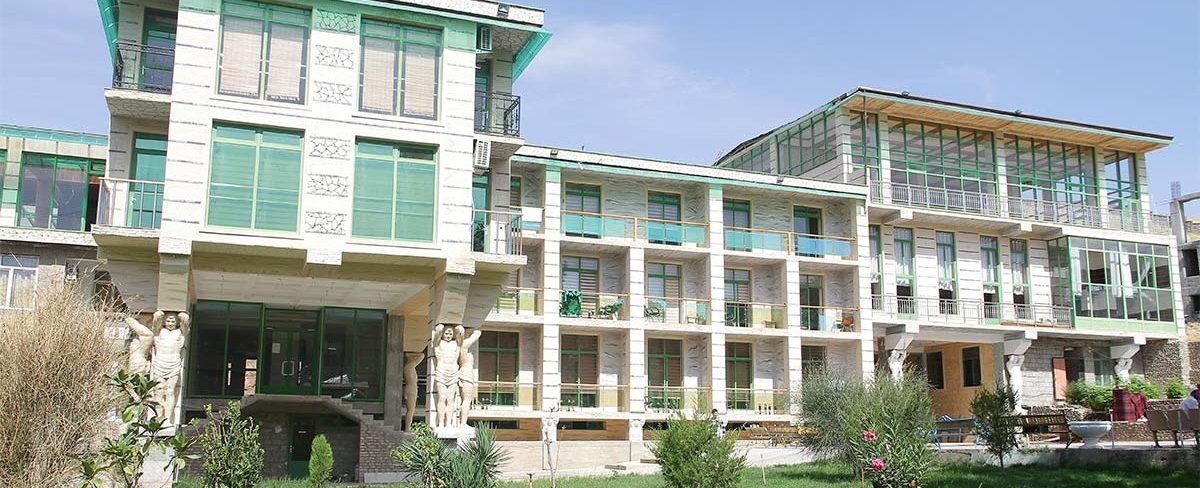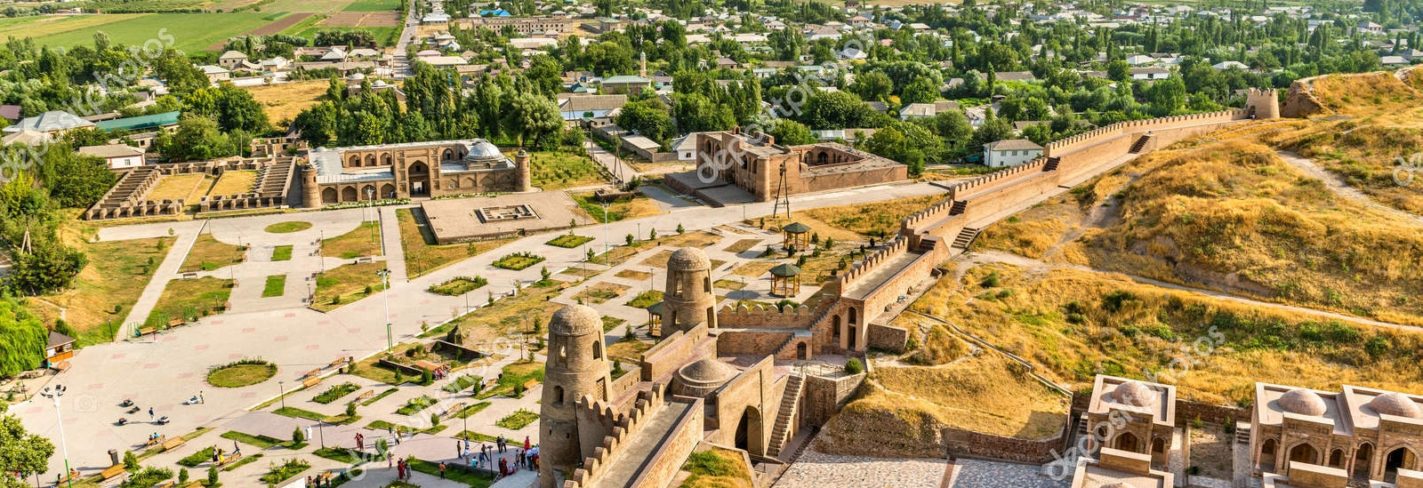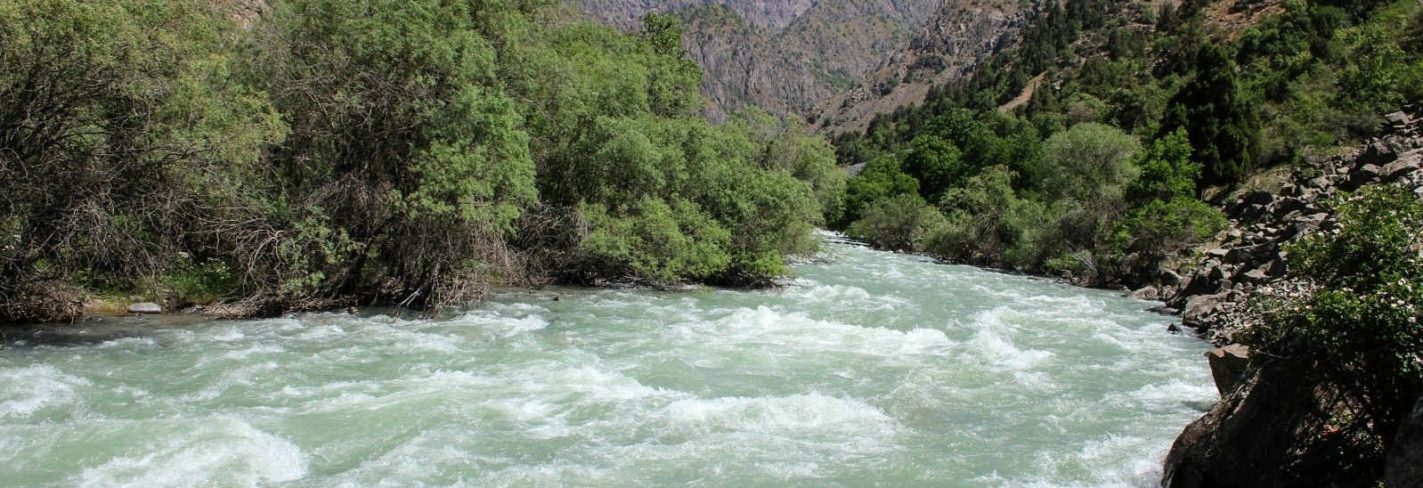MENUMENU



Tourists |
5 |
10 |
Per person in USD |
50 |
25 |
Included |
Guide |
(speaks your language) |
|
|
Entry tickets |
Hissar Fortress, Old Madrassah |
|
|
Transport |
One Minibus |






Caravanserai, Hisor
The medieval Hisor was one of the trade junctions located in Central Asia. It was crossed by numerous trade routes with waving seas of caravans passing it. Tired travelers arriving to Hisor, stayed in the famous Khishtin caravanserai.
The caravanserai Khishtin is one of the extant monuments of the Hisor historical and cultural complex. This medieval guest house was built in 1808 next to the Kukhna madrasah. “Khishtin” is translated as “made of brick”, since the fragments of the buildings foundation extant up to date as well as the ruins of the walls were completely laid of burnt brick. This is rather unusual, since burnt brick was more often used in construction of rulers’ palaces, madrasahs and mosques.
The caravanserai’s building did not fully survive up to date. Its initial state was captured in 1913 on the only photo based on which the architectures-renovators are restoring the monuments. Fragments of walls with height not more than a meter are only left from the original building. Up to date the renovators managed to restore the walls of the caravanserai almost fully.
In its sizes the guest house follows the Kukhna madrasah located next to it. The entrance portal was presumably of rectangular shape. The rooms were located along the perimeter. Inside the guest house there was a courtyard with a well in its center. The caravanserai’s rooms were different in sizes and comfort level. Common camel drivers and rich merchants could stay there. Though the caravanserai was remarkable for its comfortability, it was built without windows; however there were fire-places in some rooms while some other rooms came with fixtures for heating chauffers.

Mausoleum of Makhdumi Azam, Hisor
In the territory of Hisor historical and cultural reserve not far from the Kukhna madrasah there is the Makhdumi A’zam Mausoleum. Makhdumi A’zam is not a name but a title in a way, which is translated as “Supreme Lord”. There are several mausoleums under this name in the Central Asian territory. One of these mausoleums is located in Samarkand and is a burial place of Said Jalal ad-din Akhmad al-Kasani ad-Dakhbedi, the founder of “Dakhbedia” Sufi school of nakshbandia’s teachings.
Who was buried there is not known for certain, most probably, it was khoja Muhammad Khayvoki. No reliable information оn the identity of this man preserved, but according to some sources he was a statesman and religious public figure, respected by the people.
The construction of the mausoleum started at the end of the XV century and completed at the beginning of the XVI century. The mausoleum’s total area is 609 m2. Traditionally the building was constructed from burnt brick. The mausoleum’s entrance portal is not large and of square shape, behind it, there is a gurkhana and ziyaratkhana (hall for praying). Later on the building was added with a domed hall with a separate portal entrance. The architecture of the building is rather unusual, since there are no elements of décor there.


"Sky Tour" company has successfully been working in the tourist market of Tajikistan since February 2011. Despite a relatively short period of activity, the company has thousands of organized trips and satisfied customers. We provide a wide range of tourist services, from excursions around Tajikistan, to round-the-world travel. We organize travel for every taste and depending on the wishes, we select the most ideal variant for the tourist. Managers of the company "Sky Tour" are highly qualified professionals, experts in their work and work execution is impeccable. We track every stage of the journey of our tourists and in the event of unforeseen situations we quickly resolve the issues that have arisen. "Sky Tour" company successfully cooperates with tour companies in all regions of Tajikistan, and many Tour Operators in all corners of the world which gives an opportunity to expand the range of services and choice of countries for recreation. Our goal is to make your trip highly comfortable, safe, and interesting. "Sky Tour" company is a member of the TATO (Tajik Association of Tour Operators) and is accredited with the Ministry of Foreign Affairs of the Republic of Tajikistan.